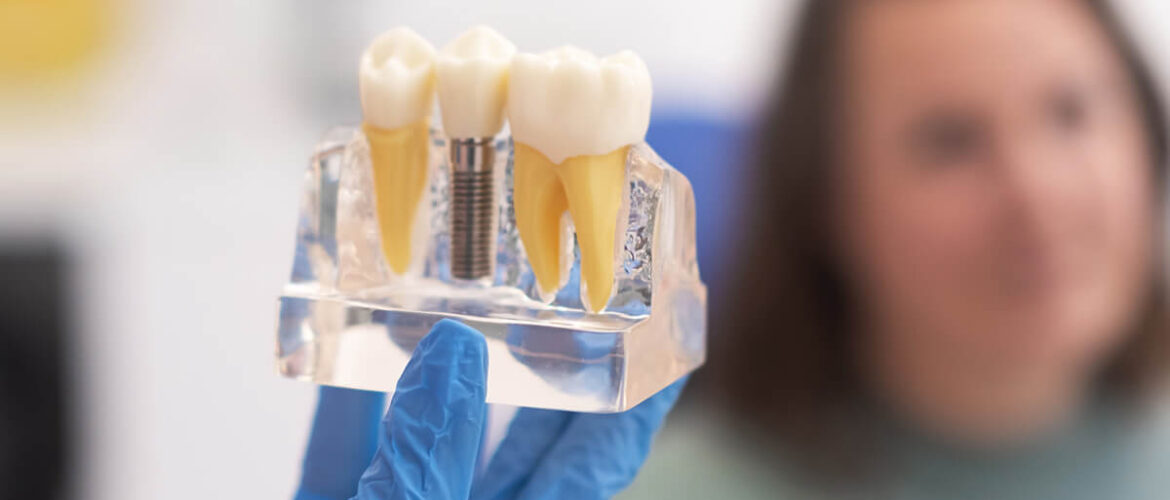Transitioning from dentures to dental implants can feel overwhelming for many patients. Concerns about pain, healing time, and how natural the new teeth will feel often cause stress. Understanding the process and what to expect can make the experience much easier. With proper preparation and care, the transition can be smooth, comfortable, and life-changing for your smile and oral health.
Dentures vs. Dental Implants: What’s the Difference
Transitioning from dentures to dental implants starts with understanding the differences between the two. Dentures are removable teeth replacements, while implants are fixed into the jawbone and function like natural teeth. Knowing the advantages and limitations of each option helps patients make informed decisions and sets realistic expectations.
Dentures – Pros and Cons
Pros:
- Easier to Obtain and Less Expensive – Dentures are widely available and require less upfront cost than dental implants. They are a practical option for patients who need a quick solution for missing teeth.
- Removable for Cleaning – Dentures can be taken out daily, making oral hygiene simpler. This allows for easy cleaning of both the dentures and the gums underneath.
- Adjustable Over Time – Dentures can be relined or reshaped as the mouth changes. This flexibility helps maintain a comfortable fit as bone or gum structure shifts.
Cons:
- Can Slip or Shift – Dentures may move while eating or speaking, causing discomfort. Patients often need adhesives to keep them stable.
- May Cause Sore Spots – Prolonged use of dentures can irritate gums or create pressure points. This can make eating or speaking uncomfortable until adjustments are made.
- Do Not Prevent Bone Loss – Dentures do not stimulate the jawbone, which can lead to bone resorption over time. This may alter facial structure and affect the fit of the dentures.
Dental Implants – Pros and Cons
Pros:
- Permanent and Stable – Dental implants are securely anchored into the jawbone, providing long-lasting stability. They eliminate slipping or movement that can occur with dentures.
- Natural Look and Feel – Implants closely mimic real teeth in appearance and function. This allows patients to eat, speak, and smile confidently.
- Supports Jawbone Health – Implants stimulate the jawbone, helping prevent bone loss. Maintaining bone density preserves facial structure over time.
Cons:
- Higher Upfront Cost – Implants are more expensive than dentures initially. However, their durability often makes them a cost-effective solution in the long term.
- Requires Surgery – Placing implants involves a surgical procedure. This may cause temporary discomfort, swelling, or bruising during the healing period.
- Longer Healing Time – Osseointegration, the process of the implant fusing with the bone, can take several months. Patience and proper care are essential for successful results.

How to Prepare for Transition
Preparation is key to a smooth transition from dentures to implants. Proper evaluation ensures your mouth is ready for surgery, reducing complications. Planning also helps determine which type of implant will work for your needs.
- Comprehensive Dental Examination
A thorough dental examination identifies the health of your gums, teeth, and jawbone. Dentists often use 3D imaging to assess bone density and structure. This step ensures the implants will be stable and long-lasting.
- Bone Grafting (If Needed)
Some patients may not have enough jawbone to support implants. Bone grafting builds up the bone to provide a solid foundation. Recovery can take several months, but this step is crucial for implant success.
- Choosing the Right Type of Implant
Dental implants can replace a single tooth, multiple teeth, or support implant-supported dentures. Your dentist will recommend the right type based on your oral health, budget, and lifestyle. Choosing the right implant ensures comfort and functionality for years to come.
The Transition Process – Step by Step
Understanding the process helps patients feel more confident about switching from dentures to dental implants. Each stage requires attention to detail to ensure comfort and success. Following these steps closely reduces the risk of complications and promotes a smooth recovery.
1. Removing Existing Dentures
Dentures must be removed before implant surgery. A dentist carefully removes them to avoid trauma to the gums or jaw. This step ensures the mouth is prepared for implants and reduces discomfort during the procedure.
2. Surgical Placement of Implants
The implant procedure involves placing titanium posts into the jawbone. Local anesthesia or sedation ensures the process is painless. After surgery, patients may experience mild swelling or discomfort, which can be managed with medication and cold compresses.
3. Healing and Osseointegration
Osseointegration is when the implant fuses with the jawbone, providing stability. Healing typically takes three to six months. During this time, maintaining oral hygiene and following dentist instructions is crucial to prevent infection and support proper healing.
4. Temporary Restorations
While implants heal, temporary crowns or dentures may be placed. These allow patients to eat, speak, and smile confidently. Proper care and regular cleaning of temporary restorations are essential to avoid complications.
5. Placing Permanent Dental Implants
Once healing is complete, permanent crowns, bridges, or implant-supported dentures are fitted. These are designed to match natural teeth in colour and shape. Proper alignment and comfort are checked before finalizing, ensuring the implants feel natural and functional.
Tips for a Comfortable Transition
Comfort during the transition depends on preparation, care, and following dentist instructions. Simple adjustments can make the process easier. Here are practical tips for a smoother experience.
- Maintain Oral Hygiene
Keep your mouth clean to avoid infection. Brush gently around implants and gums. Flossing and using antiseptic mouthwash can reduce bacteria and support healing. Regular dental check-ups help monitor progress.
- Adjust Diet and Eating Habits
Start with soft foods after surgery to prevent irritation. Avoid hard, sticky, or crunchy foods until the dentist confirms healing. Gradually reintroduce normal foods to allow your mouth to adapt naturally.
- Manage Discomfort and Swelling
Mild pain or swelling is common after surgery. Use cold compresses and follow prescribed medication schedules. Rinsing with saltwater or using dentist-approved gels can soothe gums effectively.
- Regular Follow-Ups
Frequent dental visits help monitor healing and implant stability. Dentists can detect potential problems early and make necessary adjustments. This ensures the transition is smooth and long-term results are successful.
- Seek Support and Ask Questions
Don’t hesitate to contact your dentist if you experience unusual pain or anxiety. Asking questions and staying informed reduces stress. Support from dental professionals ensures confidence and comfort during recovery.
Common Challenges and How to Overcome Them
Transitioning to dental implants may involve temporary challenges. Knowing these issues in advance helps patients respond effectively. With proper guidance, these difficulties can be managed smoothly.
- Temporary Speech Difficulties
Adjusting to implants may cause minor speech changes. Practicing speaking slowly and reading aloud can help. Over time, speech usually returns to normal as the mouth adapts to the new implants.
- Sensitivity or Soreness
Mild discomfort or gum sensitivity is normal. Rinsing with warm saltwater or using gels recommended by your dentist can relieve pain. Monitoring the area closely ensures it heals correctly without complications.
- Anxiety About Surgery
Surgery can be intimidating for some patients. Discussing sedation or pain management options helps reduce stress. Understanding each step of the process also increases confidence and comfort.
Long-Term Benefits of Switching to Dental Implants
Dental implants offer benefits that dentures cannot match. They improve oral health, restore function, and provide long-lasting results. Understanding these advantages highlights why the transition is worthwhile.
- Improved Stability and Function
Implants stay securely in place, allowing you to chew and speak naturally. Unlike dentures, there’s no slipping or need for adhesives. This stability restores confidence in daily activities.
- Bone Preservation
Dental implants stimulate the jawbone, preventing bone loss. Maintaining bone density helps preserve facial structure and overall oral health. This benefit is particularly important for long-term dental well-being.
- Durability and Confidence
With proper care, dental implants can last decades. They provide a natural look and feel that boosts self-esteem. Patients often report improved quality of life and greater satisfaction with their smile.
Frequently Asked Questions
- Am I too old to get dental implants?
Age is not a limiting factor for implants as long as you have healthy gums and sufficient bone. Many patients in their 70s and 80s successfully receive implants.
- Can I smoke after getting dental implants?
Smoking increases the risk of implant failure and delays healing. Dentists strongly recommend quitting or reducing smoking during recovery.
- Are there alternatives if I cannot get dental implants?
Options include bridges, partial dentures, or implant-supported overdentures. Your dentist will recommend the right solution based on your needs and oral health.

Transform Your Smile with Dental Implants at Lambton Family Dental
Transform your smile and regain the confidence of natural, stable teeth with dental implants at Lambton Family Dental. Our dental team ensures a smooth and comfortable transition from dentures to implants, tailored to your needs.
Don’t wait to enjoy lasting comfort and a beautiful smile—call now at 519-344-5747 to book your appointment and start your journey toward dental implants in Sarnia today.

